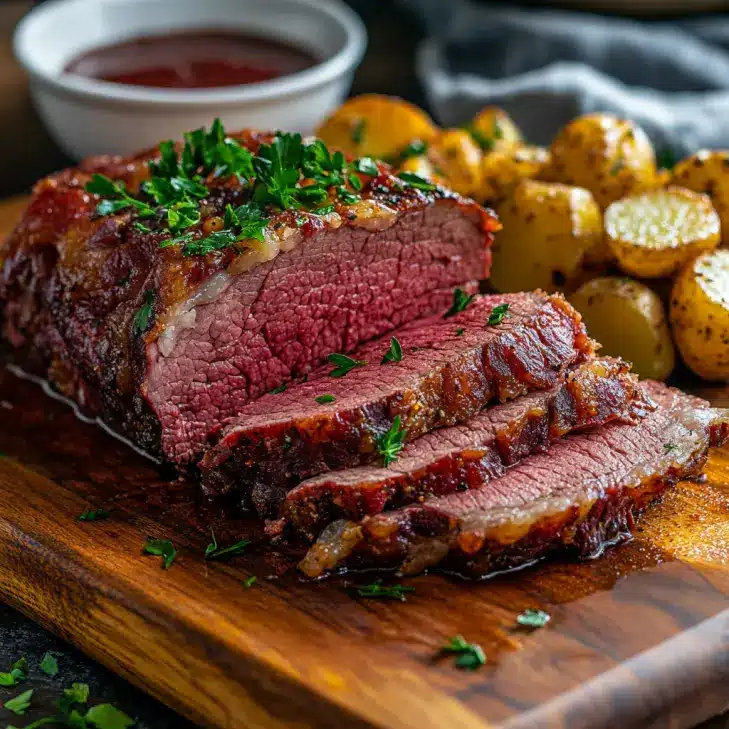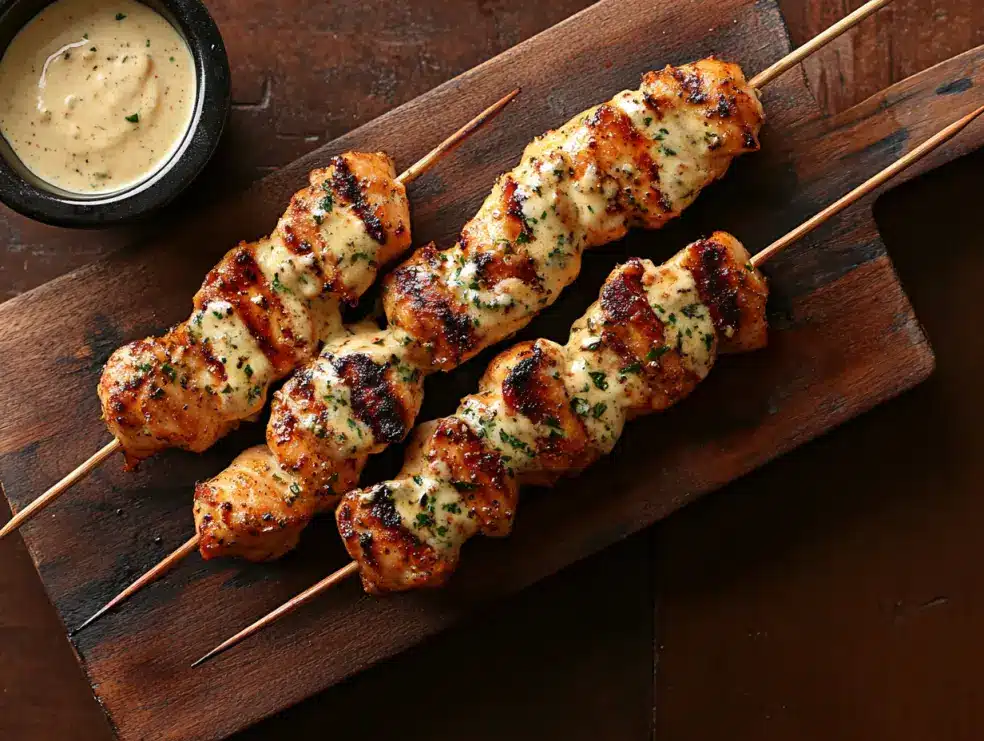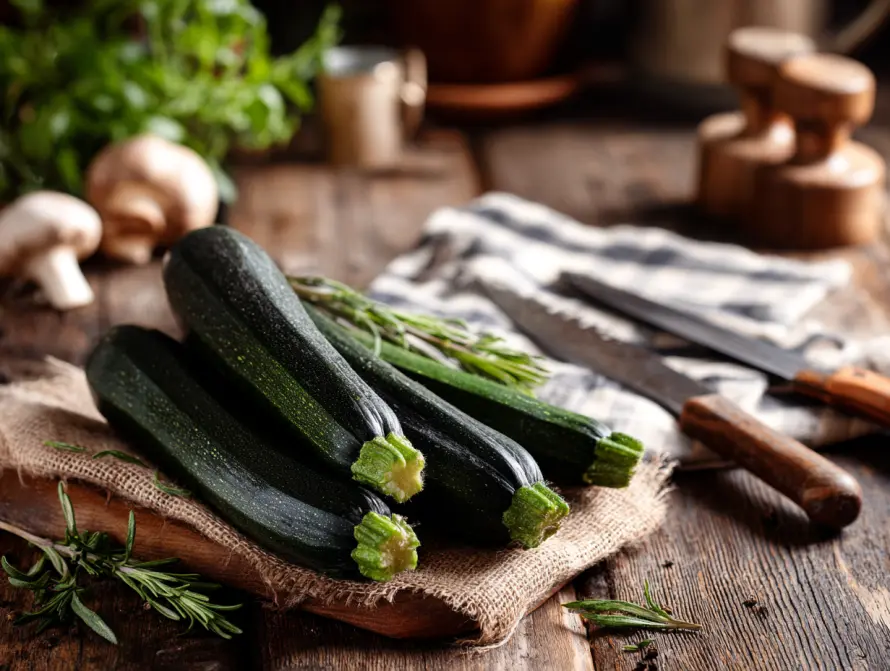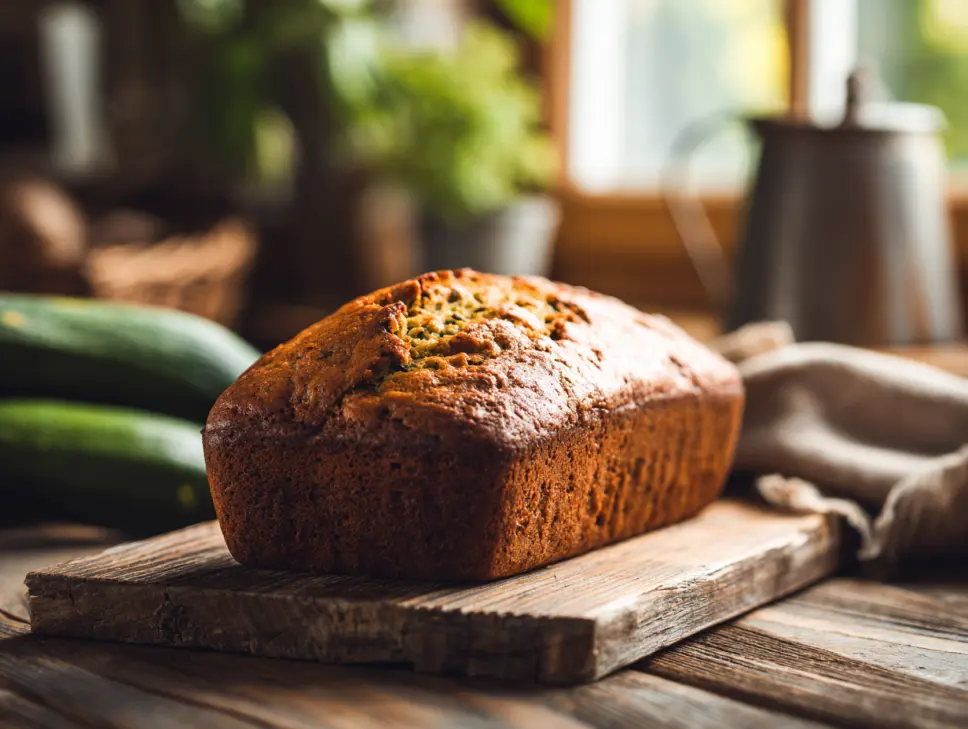Table of Contents
Why Corned Beef Brine Is a Must-Have Tradition
Growing up, I didn’t know corned beef could taste bad until I tried the store-bought kind. Dry, overly salty, and lifeless. That’s when I started experimenting in my own kitchen. I remember one chilly March afternoon, I stood over a pot of brine that smelled like cloves and mustard seed, thinking, “This smells like a warm hug.” That was my first homemade corned beef brine, and I’ve never looked back.

In our house, it’s now a tradition. I prep it 5 days before the big meal, and it quietly works its magic in the fridge while life goes on. And when it’s time, that first slice of deeply seasoned, juicy beef hits the plate it’s the moment my husband, who’s always “taste-testing,” grins and says, “Yep, you nailed it again.”
That’s the beauty of brining: it’s slow food that fits into a fast life.
The Magic Behind a Corned Beef Brine
So what is a corned beef brine? At its core, it’s a mixture of water, salt, pink curing salt (for safety and color), sugar, and pickling spices. It infuses beef brisket with flavor and preserves it while breaking down tough fibers. The result? A cut of meat that’s tender and full of complex, spiced goodness.
Using the right balance is everything. Add too little salt, and your meat is bland. Too much, and it’s unpalatable. Brining works on a molecular level, pulling water and spices into the cells of the meat. That’s why the timing matters too more on that soon.
I always include whole peppercorns, coriander, cloves, bay leaves, and mustard seeds in my spice blend. For a sweet touch, brown sugar adds depth. A quick simmer in a pot to release flavors, then it cools before the beef goes in. I keep it refrigerated in a non-reactive container (no aluminum!) and let it brine for 5 to 7 days.

How Long to Brine Corned Beef for Best Flavor
Finding the Sweet Spot: How Long Should You Brine Corned Beef?
The most common question I get is, “How long should you brine corned beef?” The sweet spot is 5 to 7 days. That range gives the brisket time to fully absorb the salt and spices without becoming overly saturated. I’ve found that 6 days is the golden number in my kitchen.
Why this range? Brining works gradually, and brisket is a dense cut that needs time for the flavors to work their way in. A quick 24-hour soak won’t do it. On the flip side, letting it sit for 10 days can lead to a mushy texture and a meat that’s just too salty even if you rinse it.
I use a basic guide of 1 gallon of water, 1 cup of kosher salt, 1 tablespoon pink curing salt, ½ cup brown sugar, and 3-4 tablespoons of pickling spices. Fully submerge the beef and keep it refrigerated the whole time. Once it’s done, rinse it under cold water before cooking.
What Happens If You Brine Corned Beef Too Long?
The most common question I get is, “How long should you brine corned beef?” The sweet spot is 5 to 7 days. That range gives the brisket time to fully absorb the salt and spices without becoming overly saturated. I’ve found that 6 days is the golden number in my kitchen.
Why this range? Brining works gradually, and brisket is a dense cut that needs time for the flavors to work their way in. A quick 24-hour soak won’t do it. On the flip side, letting it sit for 10 days can lead to a mushy texture and a meat that’s just too salty even if you rinse it.
According to Serious Eats’ guide to meat brining, the process changes the meat on a cellular level by helping it retain moisture and flavor, especially during cooking. This is why the timing matters so much.
I use a basic guide of 1 gallon of water, 1 cup of kosher salt, 1 tablespoon pink curing salt, ½ cup brown sugar, and 3-4 tablespoons of pickling spices. Fully submerge the beef and keep it refrigerated the whole time. Once it’s done, rinse it under cold water before cooking.

Storing Corned Beef After Brining the Right Way
How to Store Corned Beef After Brining
After patiently waiting a week for your brisket to soak up that flavorful corned beef brine, the last thing you want is to mishandle it at the finish line. Proper storage after brining is just as important as the brine itself.
Once your corned beef is ready, take it out of the brine and rinse it under cold water to remove excess salt and spices. Then pat it dry with paper towels. At this point, you have two storage options depending on your cooking plans.
If you’re cooking the same day or next, wrap it tightly in plastic wrap or place it in an airtight container in the fridge. It’s good for up to 2 days like this.
Want to store it longer? You can freeze it safely for up to 3 months. Just make sure you seal it in a vacuum bag or heavy-duty freezer bag. I like to label mine with the date and “Ready to Cook.” When thawing, let it defrost in the fridge overnight for best results.
Mistakes That Can Ruin the Brining Process
It’s easy to think the work is done once the meat hits the brine, but some common errors can undo all your effort.
The first mistake? Using the wrong container. Always use non-reactive containers like glass or food-grade plastic. Avoid aluminum it reacts with the salt and acids, leaving a metallic taste.
Another issue is brining at the wrong temperature. Your brisket should be kept at or below 40°F (4°C) in the fridge. Leaving it at room temperature risks bacterial growth.
Finally, never reuse brine. It’s been in contact with raw meat and is no longer safe. Always make a fresh batch for each piece of meat.
Check our Recipes by Diet section for low-sodium or nitrate-free brine options if you’re adjusting for health needs.
Storing Corned Beef After Brining the Right Way
How to Store Corned Beef After Brining
After patiently waiting a week for your brisket to soak up that flavorful corned beef brine, the last thing you want is to mishandle it at the finish line. Proper storage after brining is just as important as the brine itself.
Once your corned beef is ready, take it out of the brine and rinse it under cold water to remove excess salt and spices. Then pat it dry with paper towels. At this point, you have two storage options depending on your cooking plans.
If you’re cooking the same day or next, wrap it tightly in plastic wrap or place it in an airtight container in the fridge. It’s good for up to 2 days like this.
Want to store it longer? You can freeze it safely for up to 3 months. Just make sure you seal it in a vacuum bag or heavy-duty freezer bag. I like to label mine with the date and “Ready to Cook.” When thawing, let it defrost in the fridge overnight for best results.
Mistakes That Can Ruin the Brining Process
It’s easy to think the work is done once the meat hits the brine, but some common errors can undo all your effort.
The first mistake? Using the wrong container. Always use non-reactive containers like glass or food-grade plastic. Avoid aluminum it reacts with the salt and acids, leaving a metallic taste.
Another issue is brining at the wrong temperature. Your brisket should be kept at or below 40°F (4°C) in the fridge. Leaving it at room temperature risks bacterial growth.
Finally, never reuse brine. It’s been in contact with raw meat and is no longer safe. Always make a fresh batch for each piece of meat.

Creative Twists on the Classic Corned Beef Brine
Spice It Your Way: Variations on Corned Beef Brine
Once you’ve mastered the basic corned beef brine, you can start playing with flavors to make it your own. This is where cooking gets really fun. I like to switch up the pickling spice blend depending on the occasion.
For a more savory profile, try adding crushed garlic, juniper berries, or fresh rosemary. Want something sweeter and more aromatic? Throw in a cinnamon stick and a bit of orange peel. One time, I added a splash of apple cider vinegar, and it gave the beef a subtle tang that paired perfectly with roasted cabbage.
You can also play with the sugar. While I typically use brown sugar, maple syrup or molasses gives it a darker, more intense flavor. Just keep the salt ratios consistent.
These small tweaks allow you to adapt your corned beef to anything from family dinners to Sunday brunch leftovers.
Tailor Your Brine to Match Your Cooking Style
Your brine doesn’t just flavor the meat it sets the tone for how you’ll cook and serve it. For slow-cooked comfort, I go heavier on spices like bay leaf, allspice, and clove. If I’m planning to slice it thin for sandwiches, I dial down the bold flavors and go lighter on the sugar.
If you’re smoking the brisket afterward (yes, it’s amazing!), reduce the sugar content to avoid burning, and let the wood do more of the flavor work. For pressure cooking, trim some fat off the brisket beforehand so the spices infuse faster.
Think about your end dish before you mix the brine. Do you want it spicy, sweet, tangy, or traditional? Use the Main Dishes section for inspiration based on your cooking method.
No matter how you tweak it, the brine should always reflect your taste and your table.
Print
Corned Beef Brine: Proven 6-Day Method for Remarkable Flavor
This homemade corned beef brine creates tender, flavorful brisket every time with the perfect balance of spice, salt, and sweetness.
- Total Time: 7 days
- Yield: 1 brisket (4–5 lbs) 1x
Ingredients
1 gallon cold water
1 cup kosher salt
1 tablespoon pink curing salt (Prague Powder #1)
½ cup brown sugar
1 tablespoon black peppercorns
1 tablespoon mustard seeds
1 tablespoon coriander seeds
½ tablespoon crushed red pepper flakes
8 whole cloves
4 bay leaves
3 garlic cloves, smashed
Instructions
1. In a large pot, combine water, kosher salt, curing salt, and brown sugar. Stir until fully dissolved.
2. Add all spices and garlic to the pot. Bring to a light simmer for 2–3 minutes to release flavors.
3. Remove from heat and let the brine cool completely to room temperature.
4. Place your brisket in a non-reactive container or brining bag.
5. Pour the cooled brine over the brisket until it is fully submerged.
6. Refrigerate for 5–7 days, turning the brisket once daily to ensure even brining.
7. When ready, remove the brisket, rinse under cold water, and pat dry before cooking.
Notes
Do not skip the pink curing salt—it’s essential for proper preservation and color.
For extra flavor, add a cinnamon stick or orange peel to the brine.
Always use non-reactive containers like glass or food-safe plastic.
- Prep Time: 10 minutes
- Cook Time: 5 minutes
- Category: Beef Recipes
- Method: Brining
- Cuisine: American
Nutrition
- Serving Size: 4 oz
- Calories: 220
- Sugar: 4g
- Sodium: 1800mg
- Fat: 15g
- Saturated Fat: 5g
- Unsaturated Fat: 9g
- Trans Fat: 0g
- Carbohydrates: 5g
- Fiber: 0g
- Protein: 18g
- Cholesterol: 60mg
FAQ About Corned Beef Brine
How long should you brine corned beef?
The ideal brining time is 5 to 7 days. This allows the flavors and curing salts to deeply penetrate the meat without over-softening it. Six days is often the sweet spot for perfect texture and taste. Be sure to keep it refrigerated the entire time.
How do you store corned beef after brining?
After brining, rinse and pat the brisket dry. Store it in an airtight container or tightly wrapped in plastic wrap in the fridge for up to 2 days, or freeze it for up to 3 months. Always defrost in the refrigerator before cooking for best results.
What happens if you brine corned beef too long?
Over-brining more than 7 days can lead to overly salty and mushy beef. The texture may become spongy, and the flavor unbalanced. If you’re unsure, it’s better to under-brine slightly and adjust with seasoning later during cooking.
How long should beef sit in brine?
For brisket used in corned beef, the meat should sit in the brine for at least 5 days. Leaner cuts like chuck may only need 3 to 5 days. Always follow the guidelines for your cut and check our Quick Dinners for fast-prep tips if you’re short on time.
Conclusion
Making your own corned beef brine isn’t just about flavor it’s about tradition, patience, and transforming a tough cut into something truly special. With a simple blend of salt, spices, and a little care, you’ll turn an everyday brisket into a family favorite. Whether you’re prepping for a holiday, stocking the freezer, or trying it for the first time, brining is your best friend.
And if you’re like me always learning, always tweaking you’ll love the joy that comes from crafting your own perfect brine, one delicious batch at a time.











